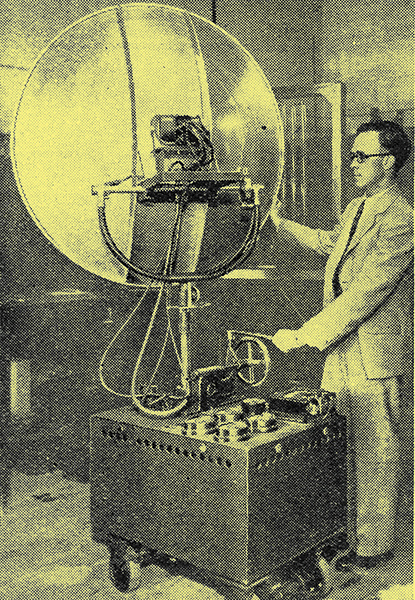|
An extract from an article on the spectrum.

A new American 'micro-ray' telephony transmitter operating on a wavelength of about 10 cm (only 4 inches!).
The general restriction to a clear optical path appears still to hold in the case of the very short waves of below 1 metre - the so-called 'centi-metre-wave' group. A further physical difference is, however, to be noted - not in the propagation of the waves, but in their method of generation. The ordinary type of reaction circuit for a valve oscillator no longer functions, and special types of oscillator have to be developed. These are the so-called 'electronic' oscillators, depending for their action on the path of the electrons within the valve, which chiefly govern the frequency generated.
A valuable future field for waves of this group appears to be in short-distance communication, for example, over water channels where the cost of cable becomes serious. Transmission can be effected on very little power, utilising reflectors of reasonable size, and, so long as the path is optically clear, fading appears to be completely absent. The recent service on about 18 centimetres inaugurated between Lympne and the French coast is an example of this use, as is also the use of a similar service over the Bristol Channel. Waves of about 10 centimetres are thus the shortest now in any form of use, but he would be a bold man who would cry finis to a steadily increasing spectrum.
|